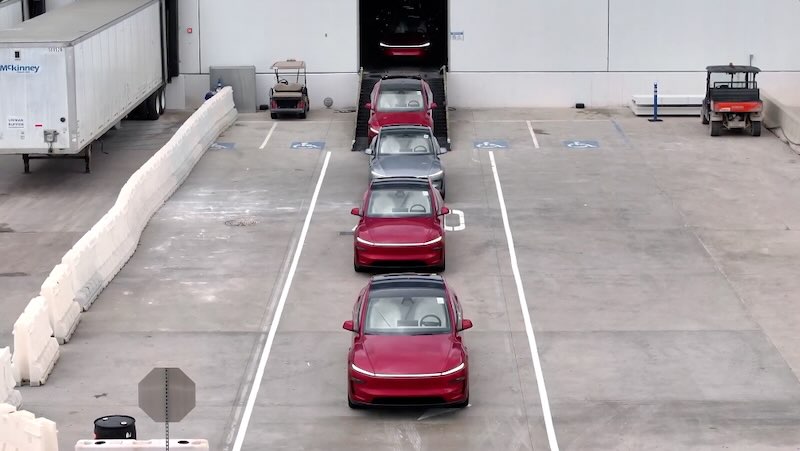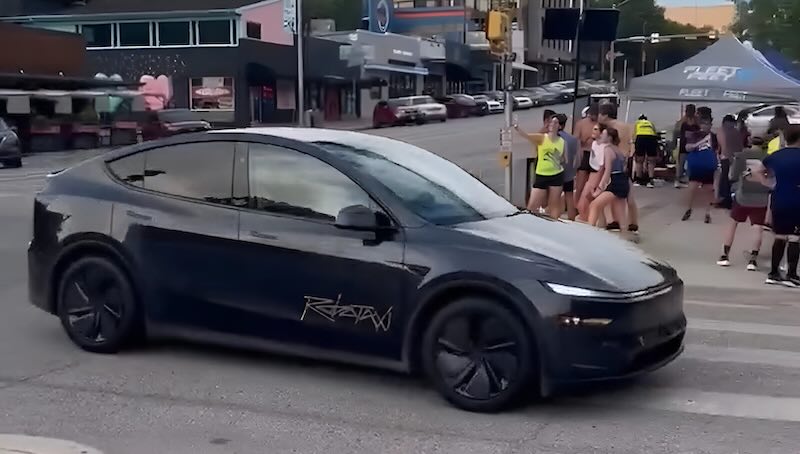Tesla has scheduled its first public robotaxi rides in Austin for June 22nd, though the company acknowledges this date remains subject to change. Elon Musk emphasized Tesla’s cautious approach to safety, noting that the first Tesla vehicle to drive autonomously from the factory to a customer’s home is planned for June 28th.
Tesla Robotaxi vehicles have been spotted operating on Austin’s public roads without safety drivers before June 12th, marking a significant milestone in autonomous vehicle deployment. Elon confirmed these vehicles received no modifications from their factory configuration, suggesting every Tesla rolling off production lines possesses autonomous driving capabilities.
Elon predicts a dramatic transformation in public road appearance within the next 2 to 3 years, anticipating widespread global adoption of self-driving vehicles. Timeline reflects Tesla’s confidence in scaling autonomous technology beyond limited testing environments.
These Robotaxi vehicles operate on a new software model that differs from the FSD v13.2.9 version currently available to regular customers. However, Tesla plans to merge this new model into the main software branch soon, ensuring broader access to enhanced autonomous capabilities.
Importantly, Tesla emphasizes this represents a general-purpose model rather than a version specifically optimized for Austin testing conditions. Approach demonstrates Tesla’s commitment to developing scalable autonomous technology that functions across diverse geographic and traffic conditions.
Tesla is simultaneously developing an earlier-stage Alpha model featuring approximately 4.5X more parameters than the current FSD v13.2.9. Substantial increase in computational complexity requires significant additional development work before full deployment later this year.
The expanded parameter count necessitates extremely efficient memory bandwidth usage, precise caching of essential operational data, and microsecond-level performance optimizations. Technical requirements ensure the system maintains 36 omnidirectional frames per second video processing while managing the increased computational load.
The larger model architecture demands complete system retraining to accommodate the increased computational demands. Elon explained that “super frugal use of memory bandwidth, caching exactly what is needed & squeezing microseconds out of everything are needed to maintain the frame rate.”
This retraining process involves optimizing every aspect of the system’s performance, from data processing efficiency to real-time decision-making capabilities. Technical challenges reflect the complexity of scaling autonomous driving technology while maintaining safety and reliability standards.
Maintaining consistent frame rates with the expanded model requires innovative approaches to data management and processing efficiency. Tesla’s engineering teams must balance computational power with energy consumption while ensuring real-time responsiveness in dynamic traffic situations.
Tesla’s focus on microsecond-level optimizations demonstrates the precision required for safe autonomous operation. Technical improvements will eventually benefit all Tesla vehicles as the technology matures and scales across the fleet.
Tesla’s approach of shipping robotaxi-capable vehicles directly from production lines without modifications represents a significant manufacturing achievement, Tesla deploys “FSD Unsupervised” in Giga Texas: 50,000+ driverless miles logged. Strategy eliminates the need for specialized autonomous vehicle configurations, reducing costs and complexity while scaling deployment.

The integration of autonomous capabilities into standard production processes positions Tesla to rapidly expand robotaxi services as regulatory approval and safety validation progress. Manufacturing advantage could prove decisive as competitors develop their own autonomous vehicle programs.
Related Post
Tesla Robotaxi Launches June 12 in Austin – Autonomous Testing Shows Zero Incidents
Tesla Launches Employee Robotaxi Testing in Austin and Bay Area Ahead of June Public Release
Tesla Files New “Tesla Robotaxi” Trademark After USPTO Rejects Generic Terms
